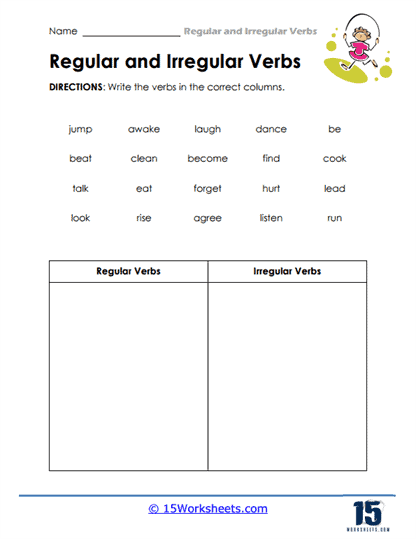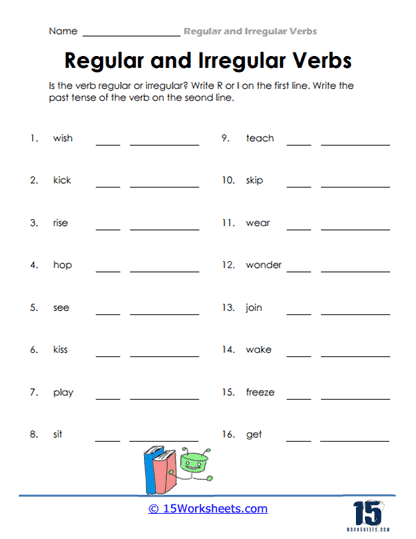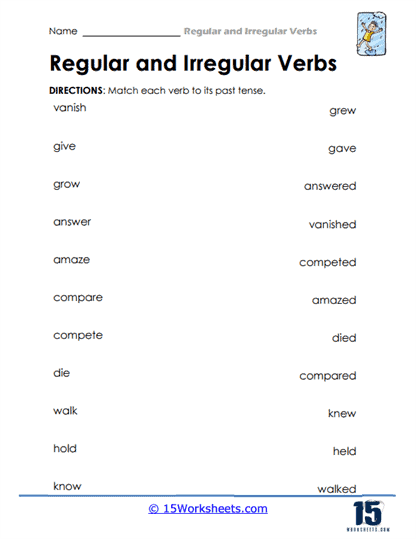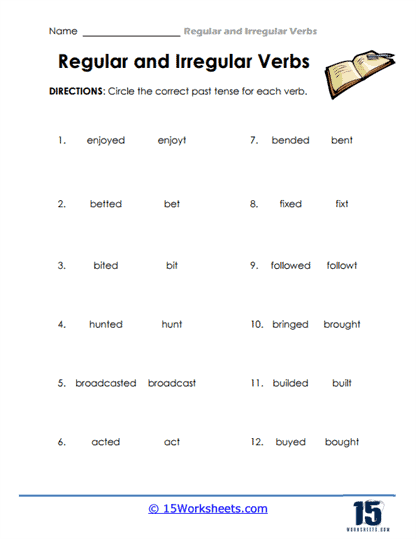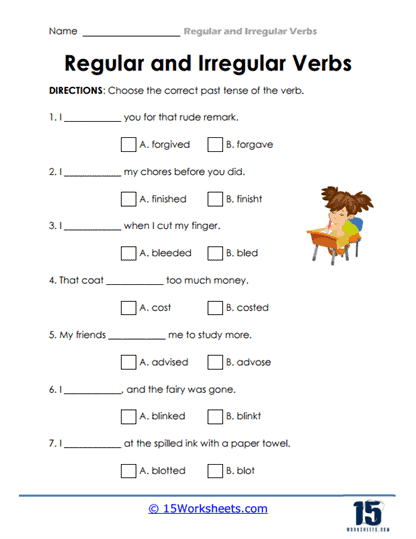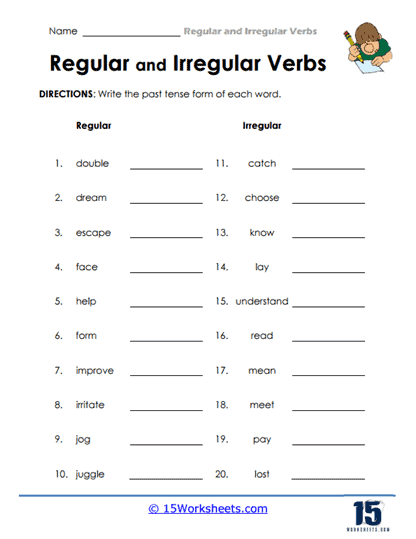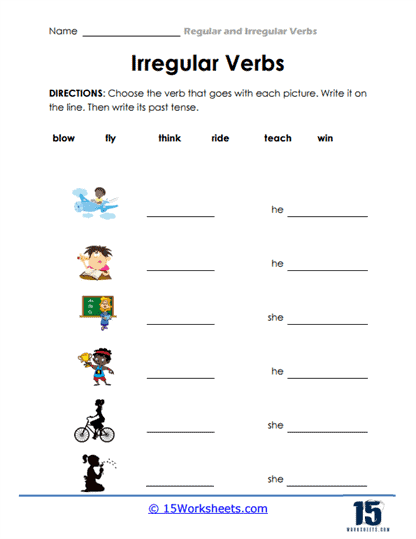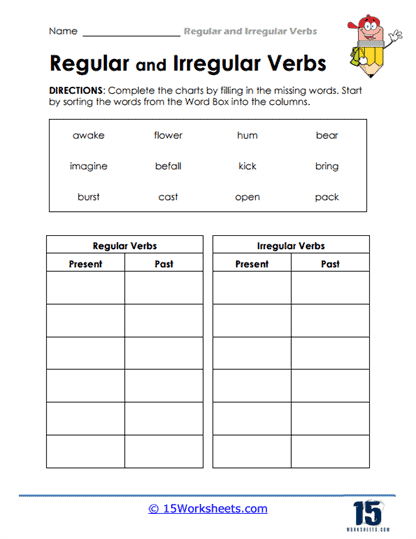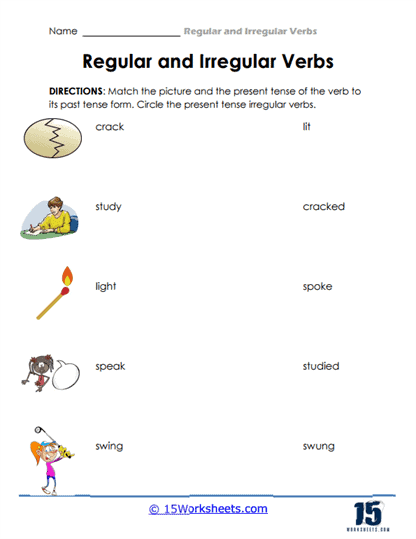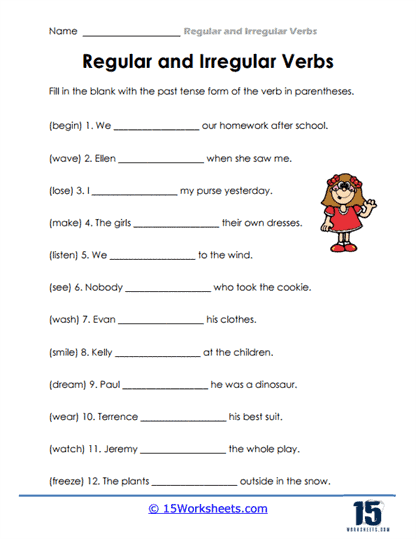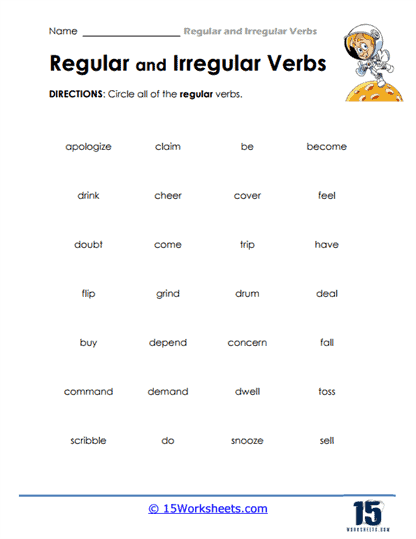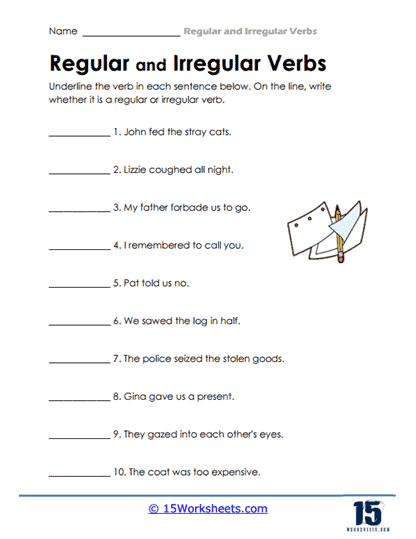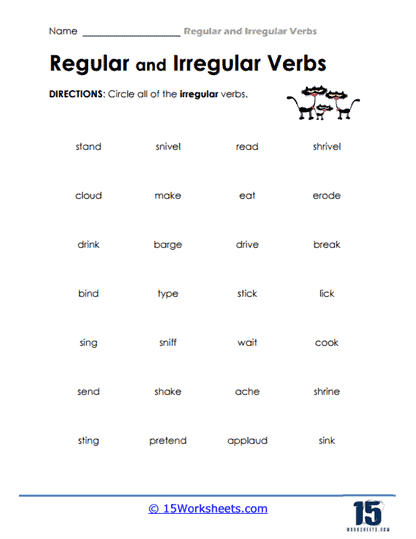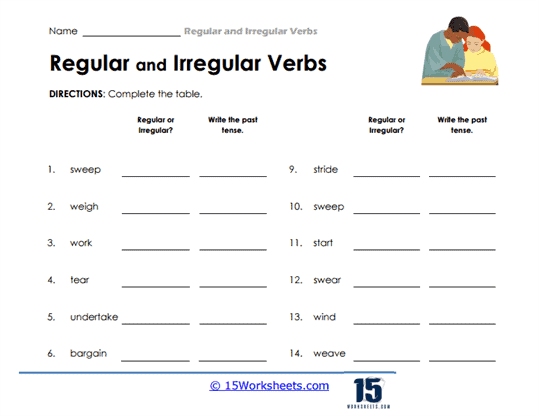Regular and Irregular Verbs Worksheets
All About These 15 Worksheets
These regular and irregular verbs worksheets are a helpful tool for teaching and reinforcing this essential topic on English grammar. Verbs are words that describe an action or a state of being, and they can be categorized as either regular or irregular.
These worksheets include examples and exercises to help students identify regular and irregular verbs in sentences and understand their different past tense forms. They also include a range of activities such as filling in the blanks with the correct past tense form of a verb, sorting verbs into regular and irregular categories, matching the present tense form of verbs to their past tense form, and more. Through these worksheets, students will:
- Distinguish regular verbs from irregular verbs;
- Understand the form and function of both regular and irregular verbs;
- And be familiar with the grammar rules on transforming verbs into their past tense form.
By completing these worksheets, students can develop a better understanding of how regular and irregular verbs work and how they are used to express past actions or states. This can help them improve their writing and communication skills, as well as their reading comprehension.
Regular Verbs vs. Irregular verbs
Regular verbs and irregular verbs can be differentiated by their past tense forms. Regular verbs follow a predictable pattern when forming their past tense by adding “-ed” to the base form of the verb. For example, the base form of the verb “walk” becomes “walked” in the past tense.
Irregular verbs, on the other hand, do not follow this pattern and have their own unique past tense forms. For example, the base form of the verb “go” becomes “went” in the past tense, which is not formed by adding “-ed”.
To differentiate between regular and irregular verbs, it is helpful to have a list of common irregular verbs and their past tense forms, as well as an understanding of the rules for forming regular past tense verbs. This can help you recognize when a verb is irregular and needs to be conjugated differently in the past tense.
It’s also important to note that some verbs can be both regular and irregular, depending on their meaning and usage. For example, “learn” can be regular in the present tense (“learn”) but irregular in the past tense (“learned” or “learnt”).
How to transform verbs in the present tense to their past tense form
The rules for changing present tense to past tense depend on the type of verb. Here are the general rules for regular verbs:
- Add “-ed” to the base form of the verb. For example: “walk” becomes “walked,” “talk” becomes “talked,” “smile” becomes “smiled.”
- For verbs ending in “e,” add only “-d.” For example: “like” becomes “liked,” “love” becomes “loved,” “smile” becomes “smiled.”
- For verbs ending in a consonant followed by “y,” change the “y” to “i” and add “-ed.” For example: “carry” becomes “carried,” “study” becomes “studied,” “fly” becomes “flied.”
Irregular verbs have their own unique past tense forms, which often do not follow any specific rule. Here are some examples of common irregular verbs and their past tense forms:
- “go” becomes “went”
- “see” becomes “saw”
- “eat” becomes “ate”
- “do” becomes “did”
- “give” becomes “gave”
- “have” becomes “had”
It’s important to note that some verbs can be both regular and irregular, depending on their meaning and usage. For example, “learn” can be regular in the present tense (“learn”) but irregular in the past tense (“learned” or “learnt”).
In summary, by understanding these rules for changing present tense to past tense, you can improve your writing and communication skills and avoid common errors in verb tense usage.

